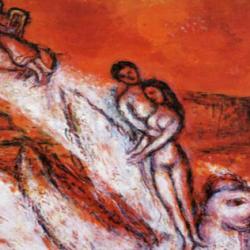In Ecclesiastes, Solomon offers intriguing, somewhat paradoxical reflections on the problems of change and permanence. On the one hand, the reality that provokes his opening lament that the world is “vapor” is the apparently unchanging permanence: The sun rises and sets day after day, the rivers flow into the seas but the seas never change, the wind goes round and round and round (1:3-11). There is nothing new under the sun (1:10). At the same time, Ecclesiastes about the vapor of life, the fact that nothing we accomplish remains. Our projects fade, our labor counts for nothing, and then we die. Vapor is notorious impermanent, and Solomon says that “all is vapor” (1:2).
These two insights appear paradoxical but are mutually supporting. The weariness that Solomon describes comes about not because of change alone or permanence alone, but because of the dynamic interaction of change and permanence. Permanence alone would not be frustrating: everything we build would remain. Change alone would not be frustrating, because we would have nothing stable that would enable us to recognize change as change. But constant dissolution in a world of permanence is weariness.
Our efforts to shepherd wind and control the vapor are fruitless, and as a result the world just goes on and on as it has always done. All our frantic efforts count for nothing; the sun still rises and sets, the rivers still flow into the sea, the wind still goes around and around. Frustration comes because the world seems impervious to our efforts to change it.











